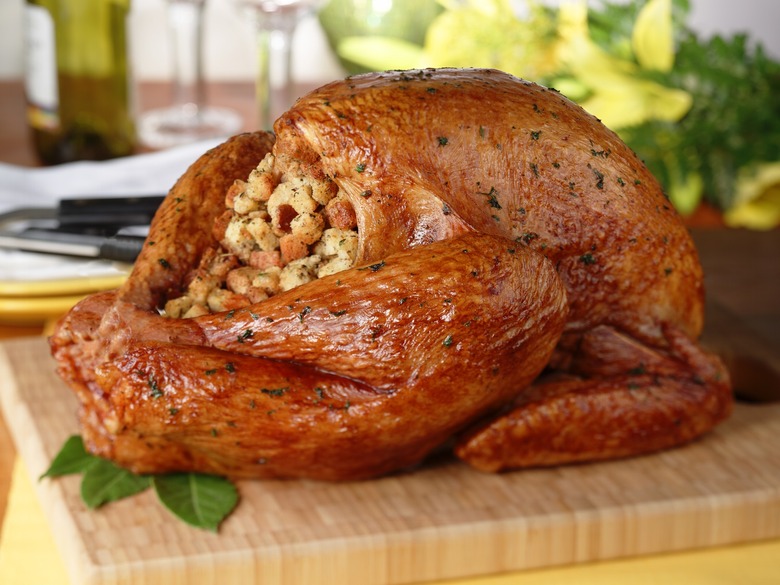Is It Safe To Stuff Turkey?
There are a lot of questions home cooks have when it comes to cooking Thanksgiving dinner. How much turkey should you buy per person? What is the best way to cook potatoes? Should you air fry, roast or fry your turkey? But one of the biggest questions comes at the cross-section of tradition and food safety: Is it safe to stuff a turkey?
The answer is no... and yes. Stuffing placed inside a turkey's cavity can breed bacteria as the porous bread absorbs the juices of a raw turkey. If not thoroughly cooked, you can eat that bacteria.
While it is absolutely the safest move to just stuff your turkey loosely with some aromatics (a cut lemon, roughly chopped onion, garlic cloves and herbs make for a very flavorful bird), there still is a food safe way to make this vintage holiday recipe.
The USDA recommends making your stuffing right before putting it in your turkey's cavity. Don't really jam it in there — just fill the cavities loosely. Then, pop your turkey in the oven immediately. Your turkey will be done when a food thermometer inserted at the center of the stuffing reaches a minimum internal temperature of 165 degrees. Be sure to check the thickest part of the turkey's thigh and breast for a 165 degree temperature reading as well, though these things will likely be done before the center of your stuffing.
While it can be done safely, stuffing a turkey is not recommended. At the end of the day, you should enjoy your Thanksgiving sides as sides and your holiday turkey as turkey. Doing otherwise is one of those turkey cooking mistakes you didn't know you were making.
